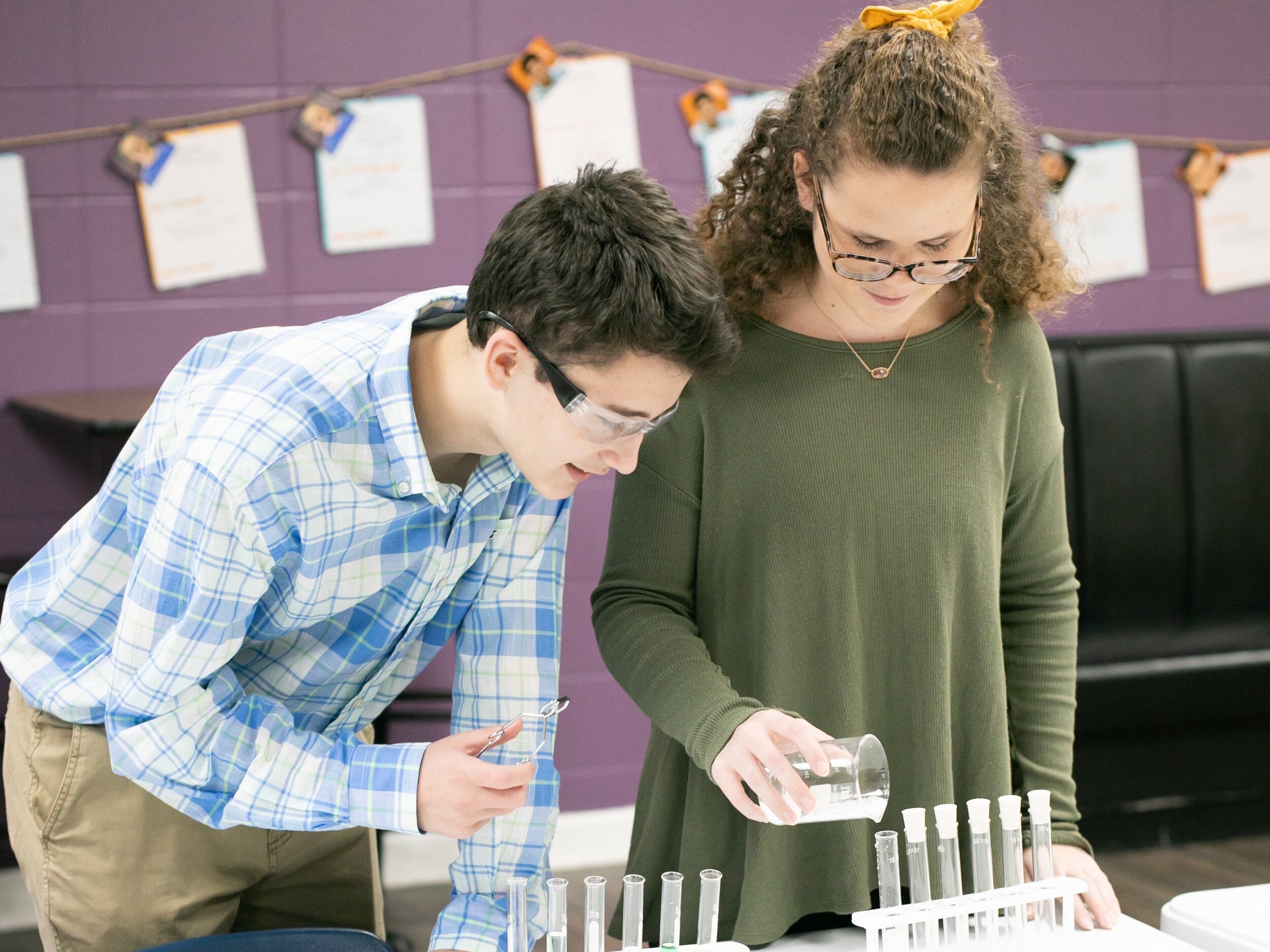
The why behind our teaching methods
Not all great minds think alike
We understand your family’s struggle.
A child’s sense of self worth can be challenged in a traditional classroom setting when they are struggling, and often parents are unsure how to help.
Everyone has a unique set of fingerprints that reflect the individuality God knit into each of us.
Each student is "fearfully and wonderfully made" by God (Psalm 139:14).
In a traditional classroom setting a bright child who learns differently can fall between the cracks, but we ensure that won’t happen to your child at HUA.
At HUA, we utilize a wide variety of research-based practices to meet the needs of our student body. While far from an exhaustive list, some examples are:
- Movement breaks
- Multisensory learning in every class
- Strategically decorated classrooms
- Multiple seating options
- Daily time outdoors
- Daily BrainGym activities
- Use of gum, dark chocolate, and suckers for anxiety and focus
- Sensory strips under tables
- Daily use of printed assignment journal for clear homework communication
- Homework checklist for improved executive functioning
- Teachers available after hours for immediate homework help
- Weekly progress reports between teachers and parents
- Encouragement tools in every classroom
- Chants, songs, and movements used to improve memorization
- Dry erase boards for individual use
- Movement games to increase retention
- Textbooks given in small sections to not overwhelm
- Honors class options- projects based on student interests
- Dual Enrollment options starting in grade 10

Students who benefit most from HUA are those who are twice exceptional, have been diagnosed with dyslexia, dysgraphia, ADHD, auditory/visual processing or executive functioning deficits.
We use proven methods to reach our students, such as “Visualization and Verbalization.” Students visualize what they are reading and then discuss to make connections between what has been read and what is upcoming.
We also use the “highlighting method” across all curriculum. Students highlight key words and phrases and write a summary sentence per paragraph until long-term memory is stretched.
Students also have the option to use talk to text in classes. This bypasses spelling errors and allows students to use more expansive vocabulary because dyslexic students often only want to use words they know how to spell.
ADHD
“The most effective schools offer small class sizes, faculty and staff trained specifically in ADHD behavior and learning, and additional services like on-site tutors.”
From ADDitude Magazine
Dyslexia
“Difficulties reading and processing words may lead to a tendency to add extra words, miss out words, misread words or conjugate verbs incorrectly. These discrepancies result in the learner having a poor grasp of what they have read.”
Executive Functioning
“Executive functioning refers to a set of skills that are related to the part of the brain called the prefrontal cortex, which is not fully developed until around age 25. Therefore, children spend much of their formative years developing this part of the brain and the skills related to attending, carrying out and completing a task.”
From CHOC UC Irvine School of Medicine on Functioning Deficits
We want to stress that our faculty offers homework help from 3-5 every day.
This is a benefit for students and teachers because it helps our faculty to understand the needs of their students: If there are a lot of calls they realize they need to adopt a different way to explain and cover the material again, and if there are no calls they can confidently move forward.



